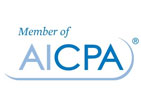 Extensions retroactive to 2017 tax year
Extensions retroactive to 2017 tax year
The biggest news in tax circles is, of course, the Tax Cuts and Jobs Act (TCJA) enacted late last year. But the TCJA isn’t the only important new tax legislation. With little fanfare, the Bipartisan Budget Act (BBA), a government spending measure, extended about 30 tax provisions that had expired at the end of 2016.
Generally, the extenders in the BBA are retroactive to 2017 but expire again after just one year. Although many provisions are industry-specific, here are six items that may have broad appeal.
1. Tuition and fees deduction: This above-the-line deduction may be claimed in lieu of a higher-education credit, such as the American Opportunity Tax Credit (AOTC). However, the deduction is limited to either $4,000 or $2,000 before being phased out, based on your modified adjusted gross income (MAGI) for the year. The phaseout is complete at $80,000 of MAGI for single filers and $160,000 of MAGI for joint filers.
Note: Depending on your situation, a higher-education credit may still be preferable.
However, the credits are also subject to income phaseouts. For instance, the AOTC, which has a maximum credit of $2,500 per student, is completely phased out at $90,000 of MAGI for single filers and $180,000 of MAGI for joint filers.
2. Mortgage debt forgiveness: Under this provision, forgiveness of a mortgage debt is excluded from tax, up to a maximum of $2 million. This tax break is only available for debt forgiveness on a mortgage for a principal residence.
3. Mortgage insurance premiums: If you pay mortgage insurance, you can deduct the cost of the premiums, subject to a phaseout beginning at $100,000 of adjusted gross income (AGI). The phaseout is complete at $110,000 of AGI. Unlike mortgage debt forgiveness, this tax break is available for a principal residence and one other home (e.g., a vacation home).
4. Residential energy credit: The latest version of the residential energy credit may be claimed for 10% of the cost of qualified energy-saving improvements installed in your home. However, the credit is capped at a lifetime limit of $500. (Separate limits of $200 apply to windows and skylights.)
5. Energy-efficient property: If you qualify, you can claim a tax credit for certain residential energy-efficient property, such as solar electric property or solar water-heating property. This credit, which is based on a percentage decreasing from 30% to 22%, is extended retroactive to 2017 and then through to 2021.
6. Empowerment zones: Businesses and individual residents within designated empowerment zones are eligible for various tax incentives. This includes a 20% wage credit, special Section 179 expensing, tax-exempt bond financing and deferral of capital gains tax on the sale and replacement of qualified assets.
If you did not elect to benefit from these tax breaks on the 2017 tax return you initially filed earlier this year, you must file an amended return to capture the retroactive tax benefits.
For questions about the following article or other individual tax services, contact Jessica L. Pagan, CPA by calling (334) 887-7022 or by leaving us a message below.







